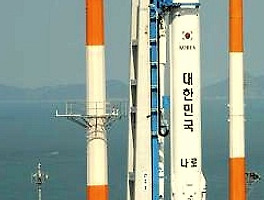우주 공간의 아름다운 별 사진 구상성단 NGC 6362
이 아름다운 별들의 사진은 허블이 우주공간에서 찍은 사진이며 아래에 원문과 함께 소개한다.

이미지출처:http://www.nasa.gov/images/content/703723main1_ngc6362-673.JPG
원글출처:http://www.nasa.gov/mission_pages/hubble/science/ngc6362.html
허블망원경이 관측하고 찍은 예상치 못한 젊은 별
미국의 항공우주국 나사(NASA)와 유럽우주기구 ESA 허블우주망원경(Hubble Space Telescope)이 구상성단 NGC 6362의 중심부에서 인상적으로 관측한 인상적인 사진이다.
구상성단이 찍힌 이 사진은 구상성단 핵심부를 좀 더 심도 있게 관측 할 수 있게 해준 ,서로다른 색을 가진 고해상도 별들의 사진이다.
중력으로 팽팽하게 묶여 있는 구상성단들은 나이 많은 별들로 구성되 있다.
이 별들은 거의 100억 살 정도라고 하며, 이는 태양보다 더 오래된 나이의 별들이다.
구상성단들은 일반적인 현상이며. 우리은하에서 150개 이상 존재하고 있다고 알려지고 있다.
그리고 다른 은하 속에서도 발견되고 있다.
구상성단은 우주 속에서 가장 오래된 구조들 중의 하나이다.
이들은 직접 관측 분석하기위한 접근이 가능하며, 그 결과로 구상성단은 초기 우주 속에 살아있는 화석을 만들었음을 알수 있다.
즉, 초기우주의 특성에 대한 많은 지식들을 제공한다.
천문학자들은 구상성단을 구성하는 별에서 나오는 빛을 관측 분석함으로써 구상성단의 중요한 특성을 예측하고 생각하나다.
항성진화이론을 검증하기 위해 수 년 동안 구상성단들은 이상적인 실험으로서 이용되고 있다.
여러가지 이론들 중에서 표준항성진화이론은 구상성단 내의 별들 대부분이 비슷한 나이를 가진다는 가정으로 진행된다.
그러나, 많은 구상성단에서 측정된것 중에서 최근 가장 정확한 측정으로 폭넓게 진행됨으로서 이 이론에 몇 가지 의문점을 도출한다.
최초의 관측은 허블우주망원경(Hubble Space Telescope)이 해 냈다.
이때 어떤 별들은 보다 젊게 보이는 것처럼 관측된다.
그런것 들이 함께하는 별들보다 더 푸르게 보여 짐으로서 그런 별들을 푸른 색 낙오성이라고 불리고 있다.
NGC 6362는 이런것들의 본보기이다.
그것이 구상성단 핵심 범위내에서 보통 발견되었기 때문에 이렇게 예상하지 못한 집단적인 물체들에 대해 가장 합리적으로 설명 한다면 그런 별들이 항성 충돌의 결과나 쌍성계 내 별들 간 물질 전이 때문에 나타났다는 이론이다.
구상성단의 중심부는 별의 밀도가 가장 높다.
새로운 물질이 유입된다면 구상성단 내 별을 가열시킬 것이며, 이는 이웃 별들보다 좀 더 젊게 보이게 만든다는 것이다.
NGC 6362는 지구에서 아라 별자리까지 25,000광년 정도의 먼 위치에 있다.
영국 천문학자 James Dunlop 박사가 1826년 6월 30일 처음 이 구상성단을 발견한것이다.
여기 보여주는 이 아름다운 이미지(image)는 자외선과 가시광선, 그리고 적외선을 혼합해서 촬영하여 믹싱된
것이며, 광시야 카메라 3개와 서베이등 발전된 형태로 장착된 다 채널에 카메라로 촬영된 것이다.
길이 2.2미터 의 MPG/ESO 망원경으로 촬영된 이 NGC 6362 구상성단은 수요일 유럽남부천문대에 의해 발표된다.
|
|
원문:
Hubble Sees an Unexpected Population of Young-Looking Stars.
The NASA/ESA Hubble Space Telescope offers an impressive view of the center of globular cluster NGC 6362. The image of this spherical collection of stars takes a deeper look at the core of the globular cluster, which contains a high concentration of stars with different colors.
Tightly bound by gravity, globular clusters are composed of old stars, which, at around 10 billion years old, are much older than the sun. These clusters are fairly common, with more than 150 currently known in our galaxy, the Milky Way, and more which have been spotted in other galaxies.
Globular clusters are among the oldest structures in the Universe that are accessible to direct observational investigation, making them living fossils from the early years of the cosmos.
Astronomers infer important properties of globular clusters by looking at the light from their constituent stars. For many years, they were regarded as ideal laboratories for testing the standard stellar evolution theory. Among other things, this theory suggests that most of the stars within a globular cluster should be of a similar age.
Recently, however, high precision measurements performed in numerous globular clusters, primarily with the Hubble Space Telescope, have led some to question this widely accepted theory. In particular, certain stars appear younger and bluer than their companions, and they have been dubbed blue stragglers. NGC 6362 contains many of these stars.
Since they are usually found in the core regions of clusters, where the concentration of stars is large, the most likely explanation for this unexpected population of objects seems to be that they could be either the result of stellar collisions or transfer of material between stars in binary systems. This influx of new material would heat up the star and make it appear younger than its neighbors.
NGC 6362 is located about 25 000 light-years from Earth in the constellation of Ara (The Altar). British astronomer James Dunlop first observed this globular cluster on 30 June 1826.
This image was created combining ultraviolet, visual and infrared images taken with the Wide Field Channel of the Advanced Camera for Surveys and the Wide Field Camera 3. An image of NGC 6362 taken by the MPG/ESO 2.2-meter telescope will be published by the European Southern Observatory on Wednesday.
Credit: ESA/Hubble & NASA
|
|
'우주와행성탐사' 카테고리의 다른 글
| 우주와 행성탐사 수성 (0) | 2019.02.01 |
|---|---|
| 화성탐사 진행역사 (7) | 2017.12.21 |
| 동쪽하늘의 이 별이 궁금합니다. (2) | 2017.12.21 |
| 나로호 발사와 부산-고흥 교통정보,뷰포인트 (0) | 2013.01.29 |
| 소유즈 우주에서 125일체류후 무사귀환 (0) | 2012.09.18 |



